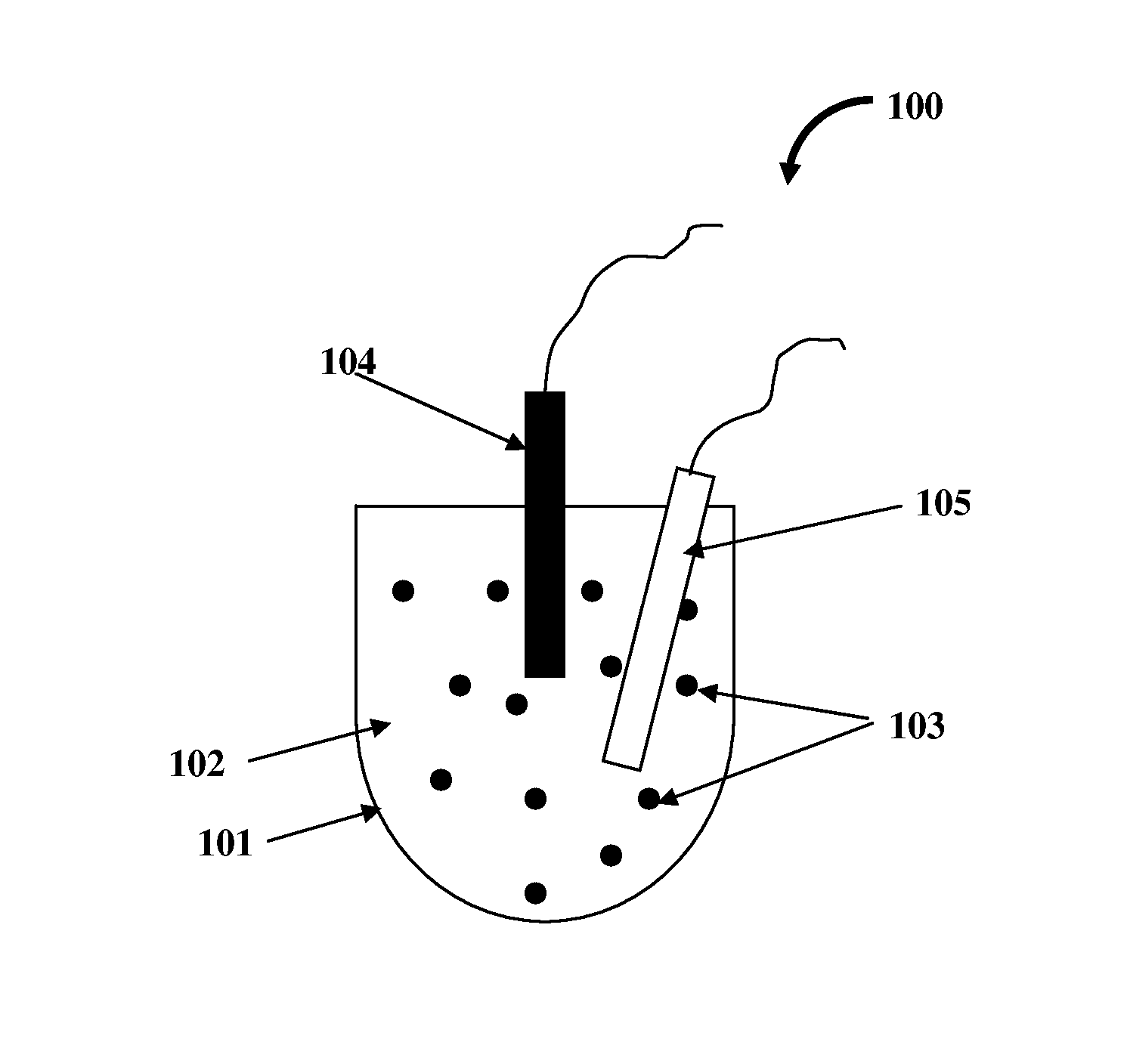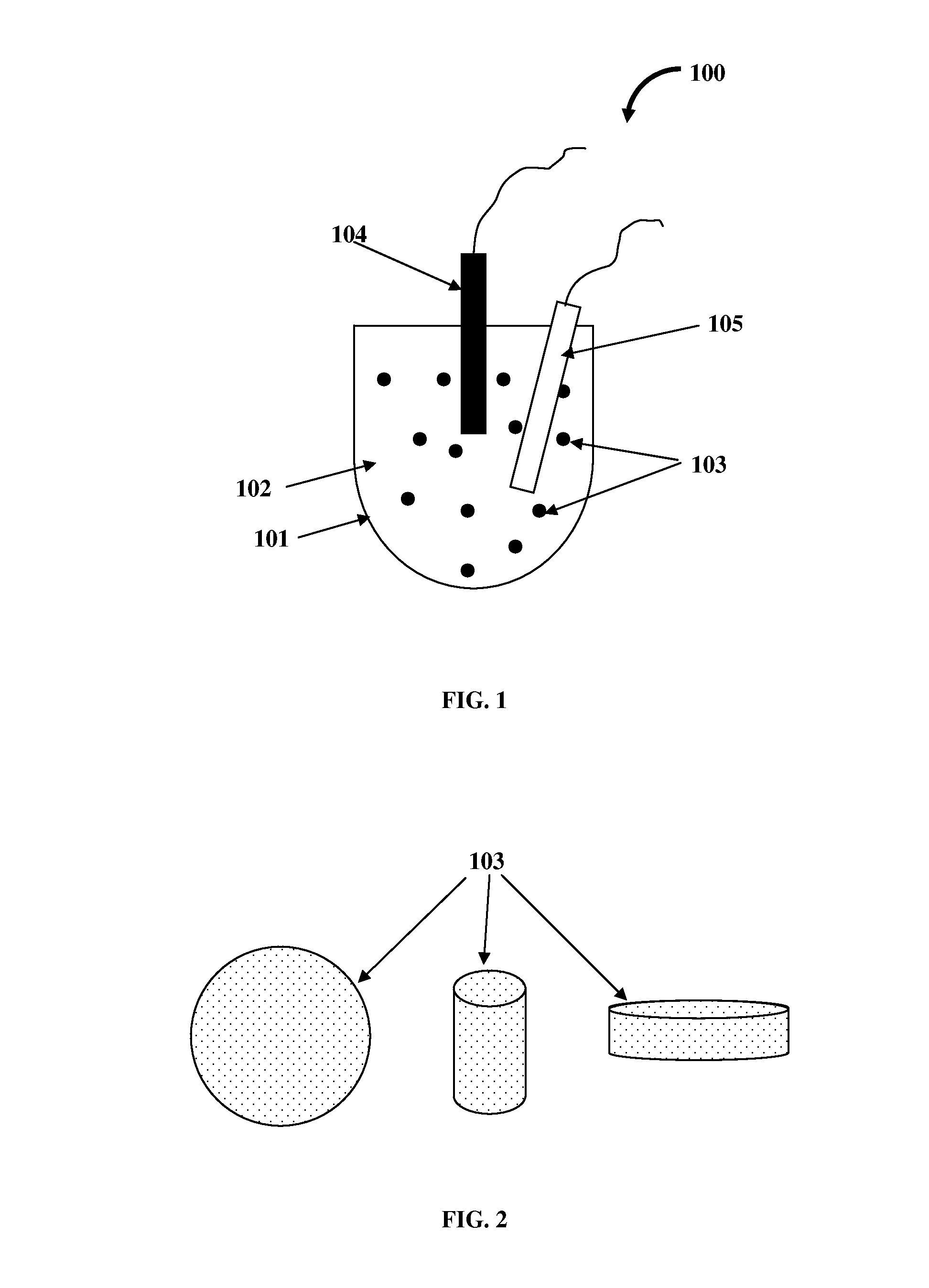Heat transfer fluid containing nano-additive
a technology of nano-additive and heat transfer fluid, which is applied in the direction of heat-exchange elements, chemistry apparatuses and processes, etc., can solve the problems of reducing the effectiveness of nano-additive particles in enhancing the thermal conductivity of nano-additive particles do not disperse well in the heat transfer fluid, and the heat transfer efficiency of non-aqueous heat transfer fluids is lower than water-based fluids
- Summary
- Abstract
- Description
- Claims
- Application Information
AI Technical Summary
Benefits of technology
Problems solved by technology
Method used
Image
Examples
example 1
[0045]A heat transfer fluid composition was prepared using the following steps:[0046](1) 500 ml of commercially available hydrocarbon based HTF, Dynalene MV (Dynalene Inc.), was obtained and placed in a glass beaker. The glass beaker was placed in an ice bath. A sample of the fluid was removed and tested for moisture content and thermal conductivity.[0047](2) 0.42 g of porous carbon nano-particles (from Y-Carbon, King Of Prussia, Pa.) of an average diameter 20 nm was added to the hydrocarbon fluid.[0048](3) A homogenizer and a wand type sonicator were placed in the fluid.[0049](4) Homogenization and sonication were carried out simultaneously for about 10 minutes.[0050](5) A sample of the heat transfer fluid was removed and tested for the nano-additive particle / agglomerate size distribution. An average size of 120 nm was obtained.[0051](6) A sample of the heat transfer fluid was also tested for moisture content and thermal conductivity.[0052](7) The moisture content of the heat trans...
example 2
[0053]A heat transfer fluid composition was prepared using the following steps:[0054](1) 700 ml of commercially available silicone based HTF, Syltherm XLT (Dow Chemicals, Midland, Mich.), was obtained and placed in a glass beaker. The glass beaker was placed in an ice bath. A sample of the fluid was removed and tested for moisture content and thermal conductivity.[0055](2) 6.0 g of 13X molecular sieve (purchased from Aldrich Chemicals) was ground to 100 nm particles using a micronizer device. The resultant particles were added to the silicone fluid in the beaker.[0056](3) A homogenizer and a wand type sonicator were placed in the fluid.[0057](4) Homogenization and sonication were carried out simultaneously for about 30 minutes.[0058](5) A sample of the heat transfer fluid was removed and tested for the particle / agglomerate size distribution. An average size of 200 nm was obtained.[0059](6) The sample of the heat transfer fluid was also tested for moisture content and thermal conduct...
example 3
[0061]A heat transfer fluid composition was prepared using the following steps:[0062](1) 500 ml of commercially available hydrocarbon based HTF, Dynalene HF-LO (Dynalene, Inc., Whitehall, Pa.), was obtained and placed in a glass beaker. The glass beaker was placed in an ice bath. A sample of the fluid was removed and tested for moisture content and thermal conductivity.[0063](2) 20 g of porous and fibrous carbon material (from Y-Carbon, Inc., King Of Prussia, Pa.) of average diameter 10 nm and length 1 micron (aspect ratio of 1:100) was added to the hydrocarbon carrier fluid.[0064](3) A homogenizer and a sonicator (wand type) were placed in the fluid.[0065](4) Homogenization and sonication were carried out simultaneously for about 1 hour.[0066](5) A sample of the heat transfer fluid was removed and tested for the particle / agglomerate size distribution. An average size of 500 nm was obtained.[0067](6) The sample of the heat transfer fluid was also tested for moisture content and ther...
PUM
| Property | Measurement | Unit |
|---|---|---|
| diameter | aaaaa | aaaaa |
| porosity | aaaaa | aaaaa |
| density | aaaaa | aaaaa |
Abstract
Description
Claims
Application Information
 Login to View More
Login to View More - R&D
- Intellectual Property
- Life Sciences
- Materials
- Tech Scout
- Unparalleled Data Quality
- Higher Quality Content
- 60% Fewer Hallucinations
Browse by: Latest US Patents, China's latest patents, Technical Efficacy Thesaurus, Application Domain, Technology Topic, Popular Technical Reports.
© 2025 PatSnap. All rights reserved.Legal|Privacy policy|Modern Slavery Act Transparency Statement|Sitemap|About US| Contact US: help@patsnap.com


